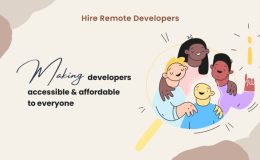A game of ecosystems
The mobile industry in 2011 is an industry ruled by ecosystems. The Android and iOS platforms are jostling for the top spot in terms of number of applications and developer mindshare. Earlier this year, Nokia had to jump from a burning platform (its in-house Symbian OS) into an ocean of uncertainty (Microsoft’s Windows Phone). MeeGo has to find foster parents, as both Nokia and Intel (its founders) seemed unable to gather enough momentum. Nokia is re-launching its effort at building the Qt ecosystem through a more ‘open’ platform governance model. Qualcomm is trying to rebuild loyalty in BREW MP by investing in online marketing. The platforms today are fighting for who can build the biggest, most active and most sustainable developer ecosystem.
What determines the success of a platform? We know it’s the wealth of its ecosystem (lets call it developer ‘mindshare’) as well as its consumer reach (the ‘market share’). It’s also patents, as these legal instruments can create not just barriers to entry (see how Apple barred Samsung tablet), but also market costs (see how HTC, Acer and Viewsonic are paying patent royalties to Microsoft).
Therefore, ecosystem wars are fought on three fronts: mindshare, market share and patents.
Let’s focus on developer mindshare. Developers are extremely critical as ‘platform consumers’. Anyone who has tried to recruit developers through traditional outbound marketing has failed. Developer marketing is about evangelising developers to a higher cause, more like crafting a software-centric religion – what can be called “religion engineering” (see evidence here on Apple as a religion). More importantly, building developer mindshare is extremely costly and tricky – you need software marketing know-how to execute successfully. Which is why many ecosystem-building efforts, including Java ME, Symbian, MeeGo and Palm OS 5, have failed.
Crashing the party
Developer marketing needs a very different toolbox and billions of investment; unless you can crash the party.
Two types of solutions exist that allow OEMs to piggy-back the Android ecosystem on non-Android devices: compatibility layers from Myriad, OpenMobile and virtualisation technologies from OK Labs, Red Bend, and VMWare. RIM has also been using an emulator approach to bring Android apps on QNX.
Myriad (www.myriadgroup.com) (SIX Symbol: MYRN). is a mobile technology company that offers browsers through to messaging infrastructure, with mobile software deployed in more than 2.2 billion mobile handsets. Based on the earlier acquisition of Esmertec (the early Google partner on the Java virtual machine) Myriad offers an Android emulator it calls Alien Dalvik. Launched in February 2011, the emulator allows “thousands of Android apps” to run on non-Android platforms like MeeGo. Myriad claims that once the APK files are repackaged for Alien Dalvik, applications can run unmodified and with no loss of performance. The company is focused on making its emulator compatible with popular apps like Dropbox, IMDB and Evernote, presumably focused at OEMs that want to bring the out of box apps experience on proprietary platforms.
OpenMobile (www.openmobileww.com) is a Massachusets-based company founded in 2010. The company is privately funded and led by Nachi Junankar, a serial entrepreneur, and Bob Angelo, a software veteran who, as COO of Phoenix Technologies, led the team that opened up the clone business and later created the PC BIOS. OpenMobile has developed an Application Compatibility Layer (ACL) that claims to bring all 250,000 Android apps to non-Android device. The ACL is available for MeeGo (webOS and Windows support are in the pipeline), and claims 100% compatibility as “all Android Apps run exactly as they do on an Android device”. Moreover, OpenMobile says that app developers don’t have to modify, recompile or repackage their Android apps to run under ACL. OpenMobile doesn’t use virtualisation or emulation, but integrates the Android application runtime into the native OS and supports Android API Level 4 or higher, as well as NDK 6 or higher.
The alternative approach to bringing Android apps on non-Android devices is to use a virtualisation technology from Red Bend, OK Labs or VMWare (see our earlier analysis of virtualisation technologies). Virtualisation allows the Android OS (including the apps ecosystem) to run in sandbox, completely isolated and independent of any other platform (including OEM proprietary OS). Like on desktop virtualisation, the apps from both platforms can surface on the same menu, so that virtualisation remains transparent to the user.
Challenges and the new shape of Googlerola
Can an OEM crash the Android party? Yes, but only with a bodyguard. We suspect that the above vendors will be facing two primary challenges that they‘ll need to muscle their way through.
Firstly, keeping in sync with the Android upstream changes is no small task, as new Android (including NDK) APIs have to be integrated into the target platforms and Google introduces API changes every two months on average.
Secondly, OEMs who use an Android compatibility layer will also be exposed to potential patent lawsuits. Now getting access to an Android Insurance Policy (see our Googlerola article) from Google will also mean complying with Google’s tight software/hardware specs. The one region which seems opportune for Android-compatible technologies is China, where telcos and OEMs have long been trying to develop their own OS flavour, but have been stuck with antiquated OS versions as they haven’t been able to keep up with Android upstream.
So can an OEM crash the Android party? Yes, but you‘ll need some pretty good bodyguards to escort you in.
Source VisionMobile


















